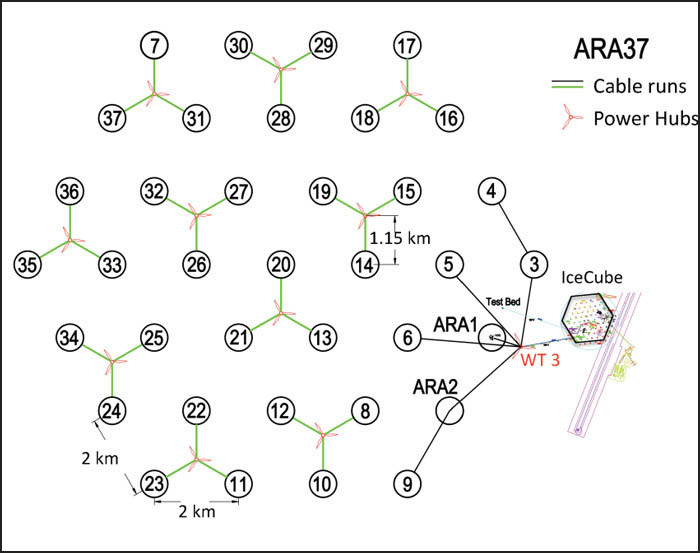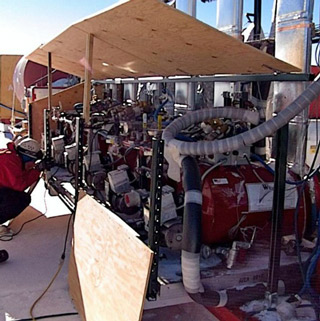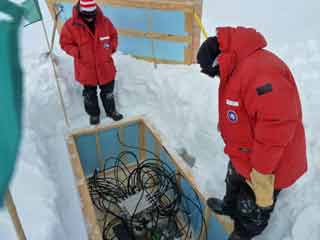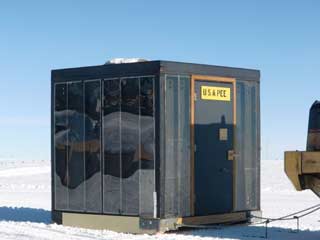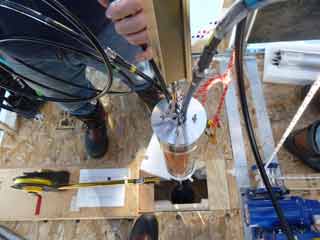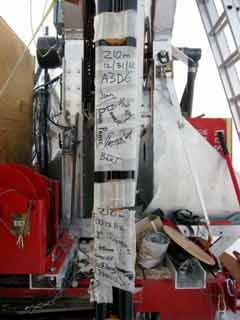2012-13 Photos - Askaryan Radio Array 2012-13
|
The first field season for ARA was in 2010-11 when various antennas and other test equipment was installed at the test bed site, and three different wind turbines and associated power/communications systems (which will be required at most of the superclusters located too far from the ICL to use station power) were installed (see my 2012 coverage for details). In 2011-12 additional antenna tests were conducted; the wind turbines and test power systems were modified, adjusted or replaced; and the installation of the first of the planned 37 sites, Site 1 (above) was completed. The 2012-13 drilling lineup is using some of the same equipment used in 2011-12, but some of it was different: | ||
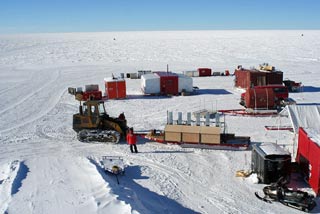 Here some of the equipment is being put together and tested outside the ICL. At right, under the plywood is the snow melting equipment, with the water tank to go behind the stacks (3). |
||
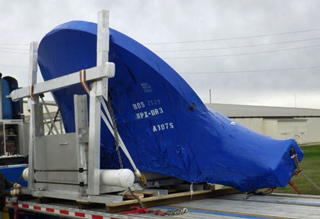 This is the most dramatic change to the equipment lineup--a new hose reel, here seen as it was being shipped from the PSL at UW-Madison (4). |
 A bit later after arrival at Pole, the hose reel was assembled in the heavy shop (3)... | |
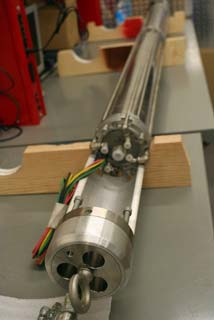 The top end of a drill stem as it was being assembled (3). |
 Here's a schematic of the drilling system...note that unlike the IceCube holes, these holes need to be dry, so the water is pumped out by the drill head as it accumulates (6). | |
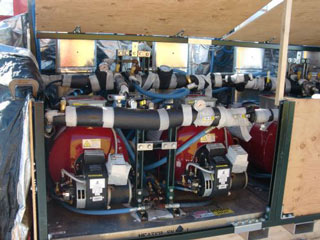 Here are some of the oil fired water heaters...otherwise known as car wash heaters in the real world. The IceCube project used lots and lots of these (6). |
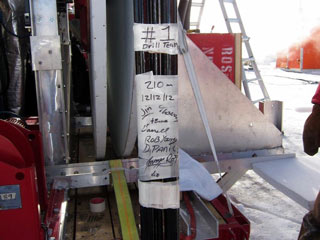 A test hole was drilled while the equipment was still next to the ICL...to make sure everything worked (2). | |
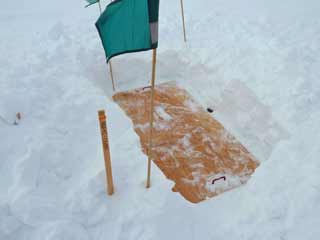 Meanwhile, some folks needed to check out the ARA1 electronics...which had to be uncovered first (2)... |
||
|
On 13 December, the drill train was moved out from the assembly area next to the ICL to the first drill site, which was about 4 km from the ICL (time lapse) (3). | ||
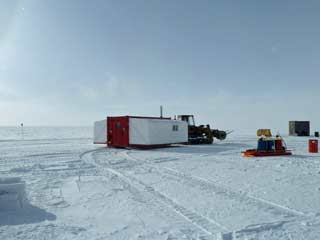 Some of the other equipment taken to the drill sites...this is the MECC (IceCubeSpeak for Mobile Expandable Container Configuration)...a heated structure used for meetings, breaks, warming, lunch, etc...and of course a source of coffee and cookies (2). |
||
|
Here's a time lapse of a hole being drilled....on Christmas Day (3). Each of the two drill sites ARA2 and ARA3 required 6 200m holes...typically a hole could be drilled in one day...and with luck the team would get back to the station before the end of the dinner hour. And the last of the twelve holes was completed on 31 December! | ||
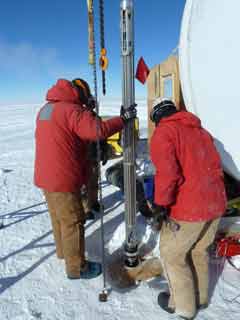 Here's one of the holes being drilled. As the hole gets deeper, the drill has to be pulled up to add an extension so that it can drill more effectively in the denser ice below the firn layer (2). |
||
The successful 2012-13 effort was to install stations #2 and #3 (see plan at top of this page), after which there will be a program review for the rest of the project. For more information and photos from this season, check out Jeffrey Donenfeld's excellent blog post...and for more technical details about the project, have a look at the references I've listed on my 2011-12 coverage). References (the numbers refer to the specific sources of the photos/figures; these references were also used in the development of the text on this page): (1) "ARA: The Askaryan Radio Array," a report presented by Thomas Meures on 20 June 2012 at the Acoustic and Radio EeV Neutrino Detection Activities (ARENA 2012) conference in Erlangen, Germany. (2) Photos provided by Mike DuVernois. (3) Photos/video from Blaise Kuo Tiong, one of the 2012-13 IceCube winterovers. (4) 15 November 2012 news article from the Physical Sciences Laboratory (PSL) at the University of Wisconsin-Madison. (5) Photos from ASC construction supervisor Joe Crane. (6)Photos from Liz Ratliff, the PolarTREC teacher who assisted the project team in December 2012. She has an extremely detailed blog here as well as many more photos and videos. (7) Photos from Jim Haugen. Back on the other side of the skiway, the fuel arch emergency egress was extended. | ||
